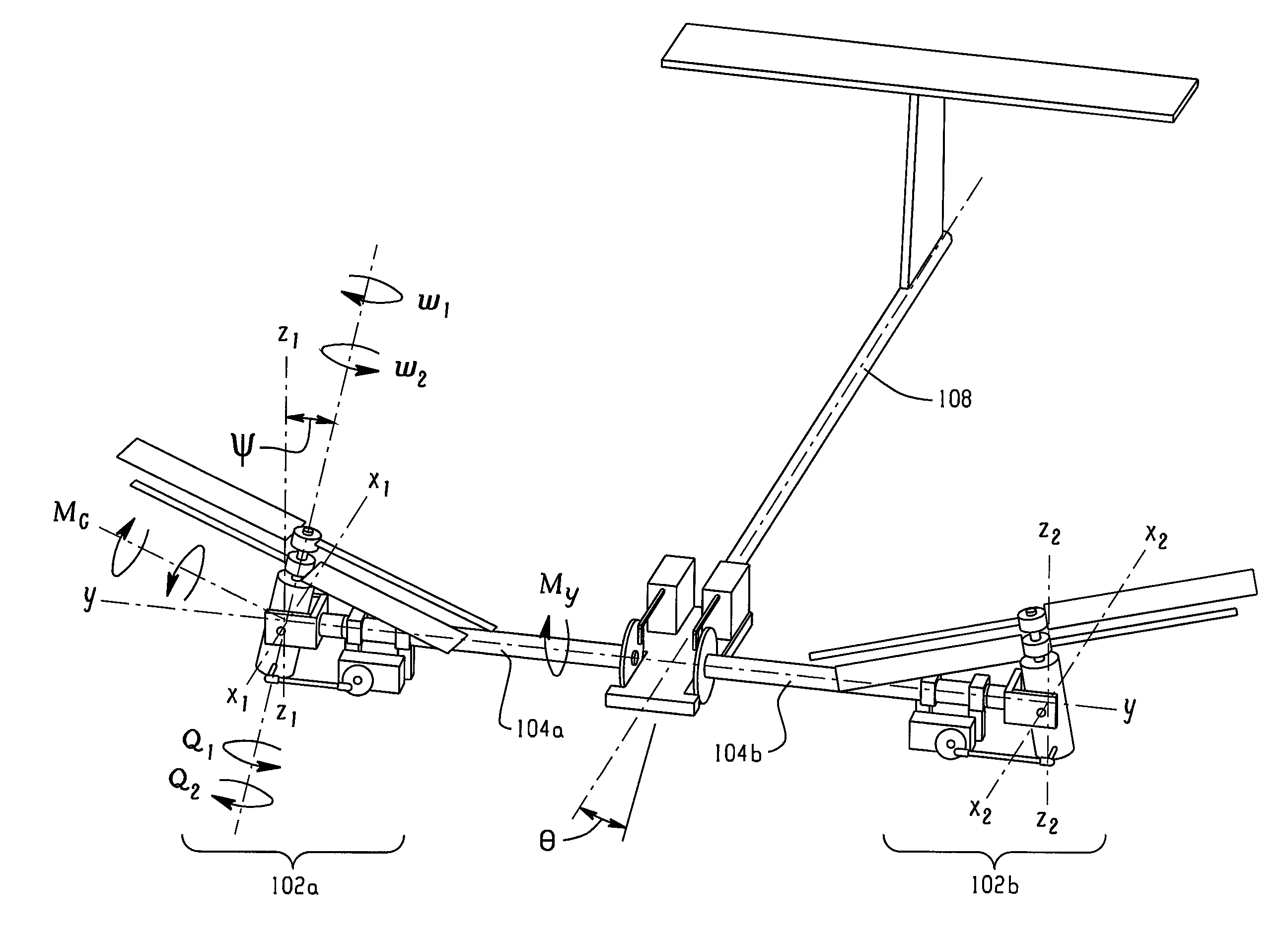Sided performance coaxial vertical takeoff and landing (VTOL) UAV and pitch stability technique using oblique active tilting (OAT)
a vertical takeoff and landing aircraft, oblique active tilting technology, applied in the direction of model aircraft, unmanned aerial vehicles, propellers, etc., can solve the problems of low effectiveness in part, low pitch stability, and low rotational speed conducive to cyclic control to improve pitch stability, so as to improve the pitch stability of the vehicle
- Summary
- Abstract
- Description
- Claims
- Application Information
AI Technical Summary
Benefits of technology
Problems solved by technology
Method used
Image
Examples
Embodiment Construction
[0018]It is to be understood that the detailed figures are for purposes of illustrating exemplary embodiments only and are not intended to be limiting. Additionally, it will be appreciated that the drawings are not to scale and that portions of certain elements may be exaggerated for the purpose of clarity and ease of illustration.
[0019]In accordance with the present disclosure, a system and method are provided which affect the pitch stability of a vertical takeoff and landing vehicle while in use. The system and method improves aircraft stability while increasing the lifting force without a need to increase size of optimum specifications of the aircraft and achieves the improved performance of coaxial rotors. The system and method improves stability of an aircraft during hover.
[0020]As shown in FIG. 1, a schematic illustration of the vertical takeoff and landing (VTOL) aircraft system 100 illustrates features of the preferred embodiments. More particularly, the aircraft system 100 ...
PUM
 Login to View More
Login to View More Abstract
Description
Claims
Application Information
 Login to View More
Login to View More - R&D
- Intellectual Property
- Life Sciences
- Materials
- Tech Scout
- Unparalleled Data Quality
- Higher Quality Content
- 60% Fewer Hallucinations
Browse by: Latest US Patents, China's latest patents, Technical Efficacy Thesaurus, Application Domain, Technology Topic, Popular Technical Reports.
© 2025 PatSnap. All rights reserved.Legal|Privacy policy|Modern Slavery Act Transparency Statement|Sitemap|About US| Contact US: help@patsnap.com



